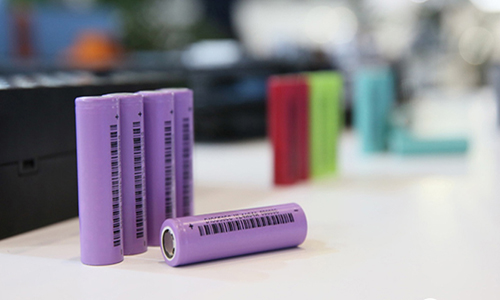Lithium Battery Capacity Loss
May 29, 2019 Pageview:1145
There are so many people who refer to lithium-ion batteries as the problem child of modern-day electronics. This is because after a few hours, these batteries tend to leave your laptop juiceless. You will find yourself on the hunt for power outlets at an unexpected time. Plus, they are also the reason why phones die quickly when you are having a phone conversation with friends.
However, a problem that is not as obvious as the issue of these batteries having a low capacity is the issue of longevity. Both new lithium polymer and lithium-ion batteries have a bad habit of easily losing capacity after some time, or they basically die.
Any known battery problem is automatically a chemistry issue by definition. In a much more healthy battery, the ions freely flow between an anode and a cathode.?
When a battery is being charged, it forces the ions from the cathode to the anode and using the battery practically revert the whole flow. Over a period of time, this entire process makes the cathode to wear out, and this leads to a reduced capacity
One thing to note is that a high-end lithium polymer battery is capable of losing roughly twenty percent of its initial capacity after about one thousand charge cycle.
A better way of understanding all these is to reason that any time you make the move to recharge your laptop, you are shaving a few seconds off the maximum life of the battery. Both heat and erratic charging aid in speeding up this degradation
Also, batteries degrade when they are not in use. According to Cadex Electronics, a completely charged battery can basically lose roughly twenty percent of its capacity after one year of regular storage.
Meanwhile, a battery pack that is empty can fall into a deep discharge eventually. This will leave the battery incapable of charging ever again. Nevertheless, the best bet you have for a long term battery storage is to run its charge down to fifty percent.
Also, you will need to remove the battery from the device in order for it to be kept cool. But, ideal storage conditions can as well leave one with a dead battery after a period of about three to four years.

Capacity Loss Understanding
A capacity loss, which can also be referred to as capacity fading, is an event that is observed in the usage of rechargeable batteries. Here, the volume of charge a battery is able to deliver at its rated voltage reduces with each use.
Far back in the year 2003, there was a report that the regular range of capacity loss associated with lithium-ion batteries after about five hundred charging cycles and discharging cycles practically varied from 12.4% to 24.1%
This basically gives an average capacity loss per cycle range of about 0.025-0.048% for every cycle. However, capacity loss in lithium batteries takes place through diverse stress factors not excluding discharge C rate, SoC: state of charge and ambient temperature.
While capacity loss is powerfully dependent on temperature, its aging rates, however, increase with reducing temperature that is below 25°C. And, when it is above 25°C, aging is facilitated with temperature increase.
Moreover, capacity loss is C-rate sensitive, and increased C-rates basically lead to a swifter capacity loss on every cycle.
Also, chemical mechanisms of degradation dominate the capacity loss at C-rates that are low while mechanical degradation dominates C-rates that are high.
However, the energy storage of battery can be easily so into three major sections that are referred to as:
· The available energy that can automatically be retrieved
· An empty zone that can be adequately refilled and;
· The rock content or unusable part that is inactive.

What Causes A Battery To Fade
Batteries start fading right from the very first day that they are produced. New batteries should be capable of delivering a hundred percent capacity, and the most parts that are in use operate at lesser than that.
While the rock content aspect of the battery steadily grows, the charging time gets shortened due to the fact that there is less to be filled. Faster charging times on batteries that are faded are easily noticeable in batteries that are nickel-based.
However, a lower charge transfer ability that stops the flow of free electrons actually prolongs charge time with aged lithium batteries. In some cases, the reduction is linear, and the capacity fade is most times a function of age and cycle count
It is worthy to note that deep discharge stresses batteries more than partial discharge. Thus, it is better not to discharge batteries completely but to charge it more frequently. Periodic compete discharge is only suggested on batteries that are nickel-based.
It is suggested in order to control the memory and also on smart batteries as a part of the calibration.
Nickel based batteries and lithium batteries deliver about three hundred and five hundred discharge and charge cycles before the capacity finally drops below eighty percent.
How To Prolong Lithium-Based Batteries
There are some steps to follow in prolonging the life of your lithium-based batteries, and they include:
· Since the batteries get to deteriorate over time, it is not ideal to get a spare battery because it will not last longer than the one you make use of. Instead of a spare, get a high capacity lithium battery and ask for those that have recently been manufactured.
· Differing from NiCad batteries, lithium batteries have no charge memory. This means that deep discharge cycles are not demanded. However, there is an exception. After thirty charges, lithium batteries should almost fully discharge to its cut off point and recharge once again. Its power gauge will eventually be recalibrated
· Should your lithium battery be discharged below a volt of 2.5 per cell, the safety circuit created into the battery will open and, the battery will be dead. Do not deeply discharge your lithium battery.

Final Thoughts
The prominent lithium-ion batteries are very large enhancements over the previous type of batteries that were being manufactured at a point in time.
While lithium batteries have not completely mature, they are still improving. Some notable developments have been made in its safety and longevity while its capacity has been increased incrementally.
- Prev Article: Where to dispose of lithium batteries
- Next Article: Lithium Ion Battery Voltage Versus Capacity
Leave Message
Hottest Categories
-
Hottest Industry News
-
Latest Industry News









